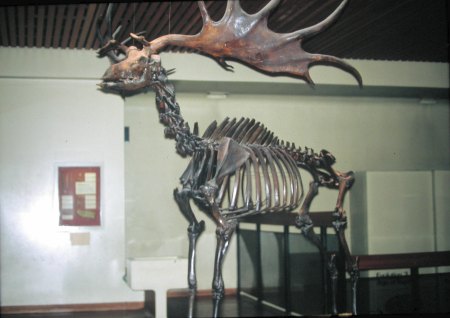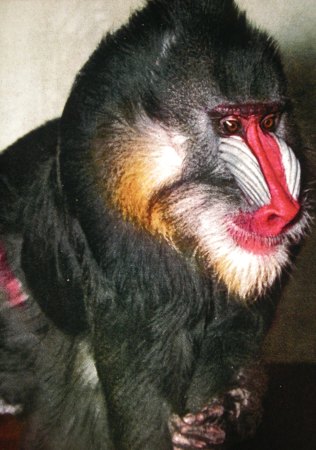

Know more?
The
giant deer
Know more?
The
mandrill
Darwin 51 |
|
|
| The second part of the book discusses sexual selection. Males
compete with each other for the favour of the females. In many cases the
females have a preference for males with a certain characteristic, for example
large antlers, if we are talking about deer. The males with the largest antlers
have the best chance to propagate and they get young ones with larger antlers
than average (provided that this is a hereditary trait). In this way the
giant deer (or Irish elk) could come into existence with a antler size of
3 m. One should say that bearing such heavy and wide antlers must have been
a disadvantage, also because the animal could not stay in the woods. Still
the advantage must have been greater than the disadvantage. Here it becomes
clear that sexual selection and natural selection sometimes can work against
each other.
Know more? |
Another example of natural selection is the colourful face of the mandrill.
Among the colourless ancestors of the mandrill there must once have been
a specimen with a hereditary deviation, namely a colored mark in its face.
The females were extremely interested in this male with the consequence that
it could reproduce without problems. And his children had the same decoration
as their father. After some generations all males had that coloured mark
in their face. But the process of sexual selection went on and the females
selected again and again the finest and most interesting male for mating.
That's why the modern-day mandrill has such a beautiful face.
Know more? |
Darwin 51 |